Over the years that I was involved with this project(beginning in 1992), I worked with junior and senior high school science teachers to involve their students in this project, which helped organize student teams at schools and colleges across the United States and around the world, to assist scientists and researchers in studying and collecting data on the effects of the Earth's ionosphere, magnetosphere and magnetic fields on electromagnetic waves such as radio signals, including very low frequency(VLF) radio waves.
I first learned about this project through an article that appeared in the monthly QST magazine, as published by the American Radio Relay League, of which I was a member, at the time. Since Amateur Radio operators are deeply involved with radio waves, it made sense that the INSPIRE Project people would run the article about their study in QST magazine. I approached two teachers at Abbotsford High School, at the time, about getting involved in this project. Both of them agreed to participate.
The first year of the project, two classes(LaVerne Harrison's high school Physics class and a Technology Education class, taught by Jerry Williams, at the high school) were each involved in the constructing of VLF radio receivers from kits. In subsequent years, Eric Elmhorst's 7th grade science class and LaVerne Harrison's high school Physics class, in conjunction with student INSPIRE teams from other schools around the country(and the world) conducted coordinated recording sessions to collect data on VLF radio wave propagation. In one year, they did the data collection in conjunction with an annual solar eclipse, to see what effect the elipse might have on VLF radio signals. In other years, the data collection was done to coincide with science experiments being conducted on board the U.S. space shuttle. In those instances, a plasma generator and modulated electron beam accelerator were operated from the cargo bay of the U.S. space shuttle, to generate the VLF radio signals.
Because 60 Hz alternating current(AC) electricity produces serious interference to VLF radio receivers, one of my first priorities was to locate a "quiet site" as far away as possible from any AC power lines. I finally settled on a site located in the Chequamegon National Forest, northwest of Medford, Wisconsin.
Each year that I was involved in The INSPIRE Project, I would start out my involvement by instructing that years' students involved, in electromagnetic radiation and radio wave theory. As mentioned earlier, the first year of the project, the students then assembled the VLF receivers from kits. In subsequent years, I brought several simple electronic hobby kits to school, for the students to assemble, using a soldering iron(of course, I instructed them in the PROPER way of handling a HOT soldering iron, too!). Then, just prior to our scheduled "on-site" data collection, I would run the students through a "sample" data collection, right at the school, so that they could rehearse the steps that would need to be taken to successfully accomplish the data collection. Following the data collection, I would send the results in to The INSPIRE Project, in California.
Equipment involved in the data collection included: 1) the assembled VLF radio receiver, 2) a special radio receiver used to record an announcement of the current time from the United States National Institute of Standards and Technology's shortwave radio station in Colorado(WWV), and 3) a portable tape recorder.
You can learn more about Project INSPIRE here: http://theinspireproject.org/
Photo
Gallery
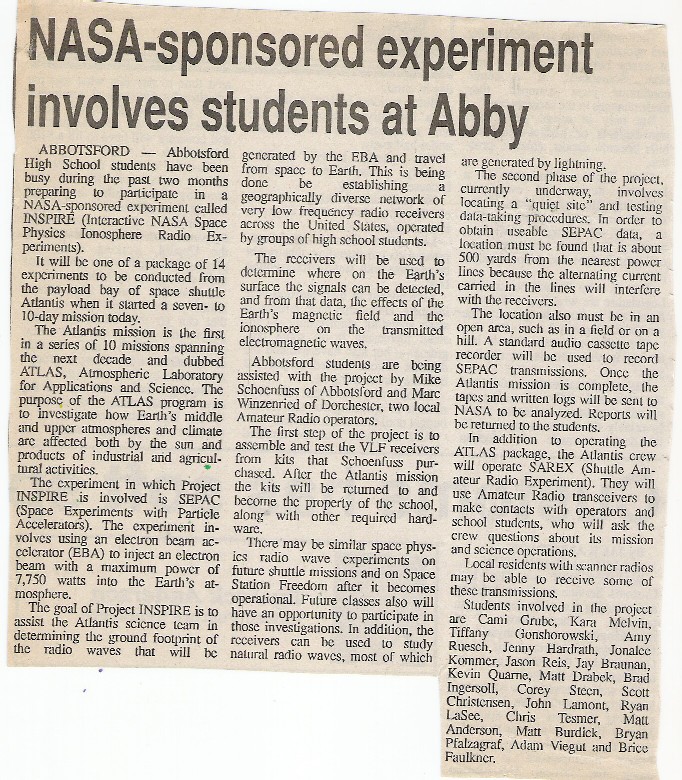
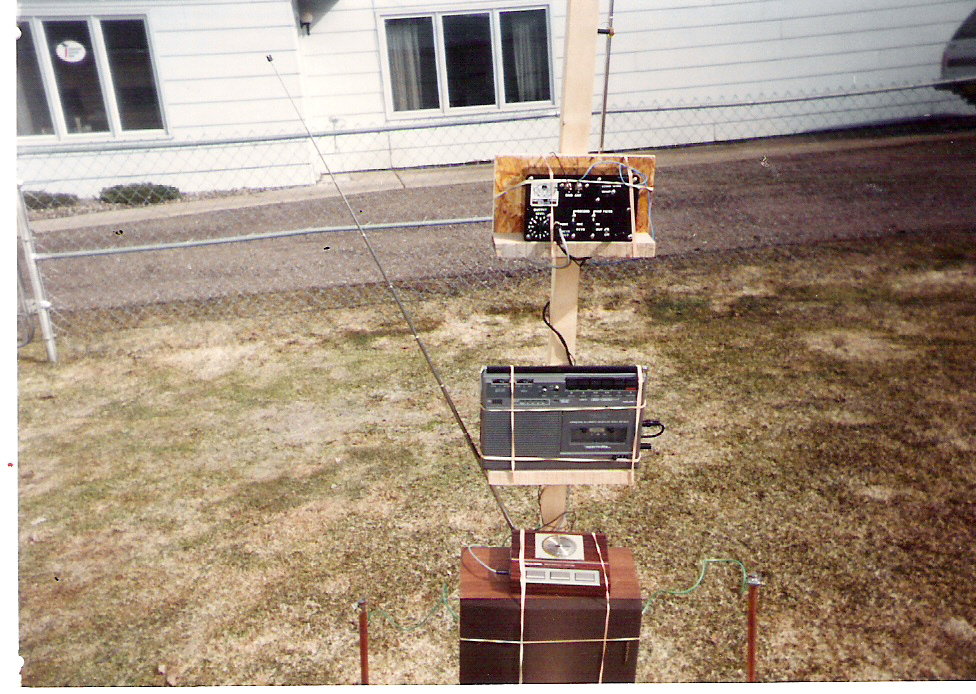
Here is what the assembled INSPIRE
equipment looked like, when set up out "in the field".
Starting from the top, the assembled & tested VLF radio
receiver. Below that, a cassette tape recorder, for
recording the signals received by the VLF radio. And
below that is a large speaker, used for listening, in "real
time", to the signals picked up by the VLF radio, with a WWV
time receiver located on top of the speaker. We used the
transmissions from the WWV receiver to record an accurate
"time stamp" at the start, and end, of each cassette tape, so
that a "time reference" would be imbedded on the tape, for the
scientists/researchers to use. Also visible in this
photo are 2 copper "ground stakes" that were put into the
ground, and connected to the VLF receiver, to help cut down on
extraneous noise from the receiver. And, above the VLF
receiver, was a long whip antenna, which would be connected to
the VLF receiver(Although, "in the field", we usually opted
for a long wire copper wire antenna, for better reception).

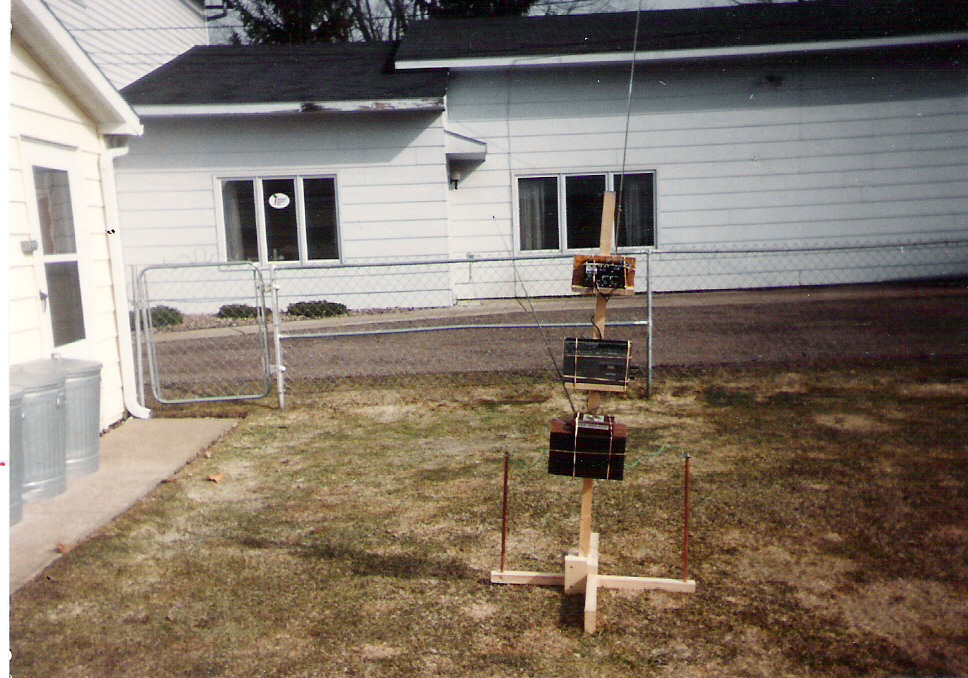
Another, somewhat long-range view, of the assembled INSPIRE equipment.
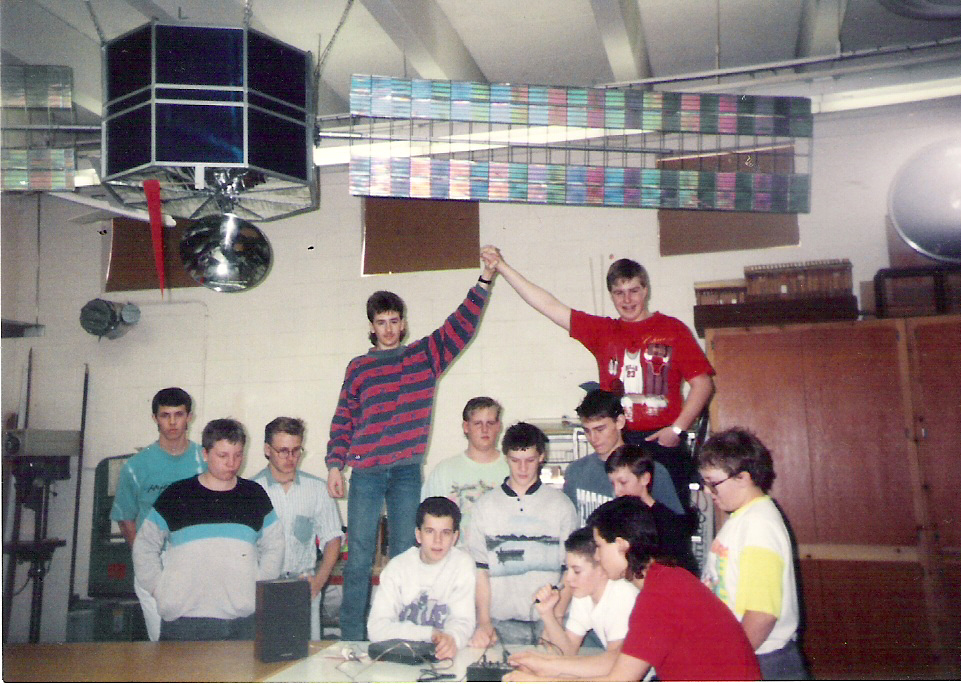
A class in the Technology Education Dept. at Abbotsford Junior/Senior High School tests the newly-assembled INSPIRE VLF radio receiver, by recording an announcement on cassette tape.
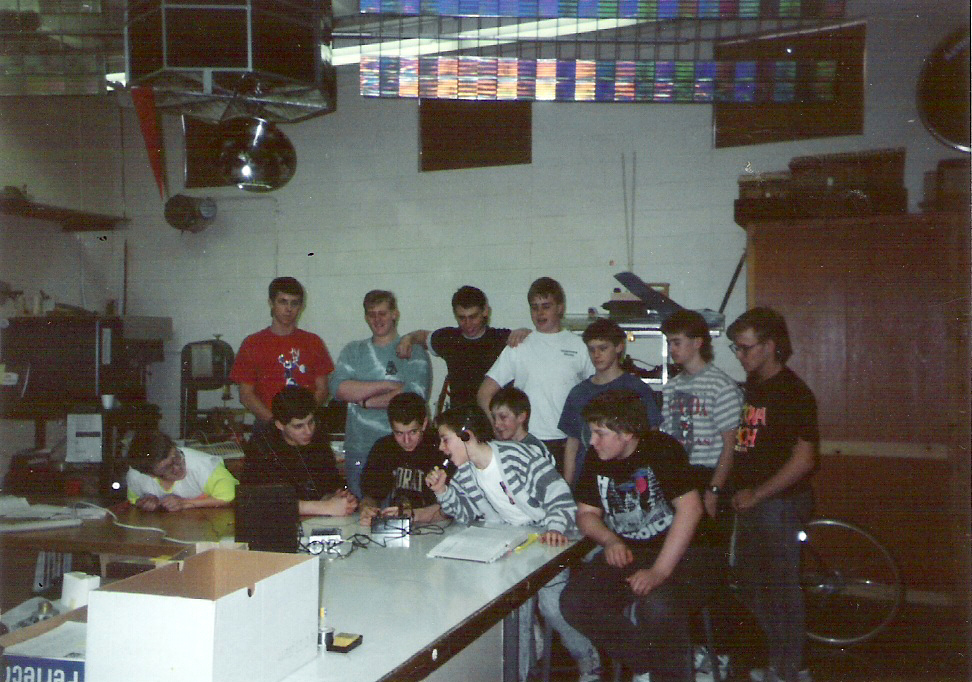
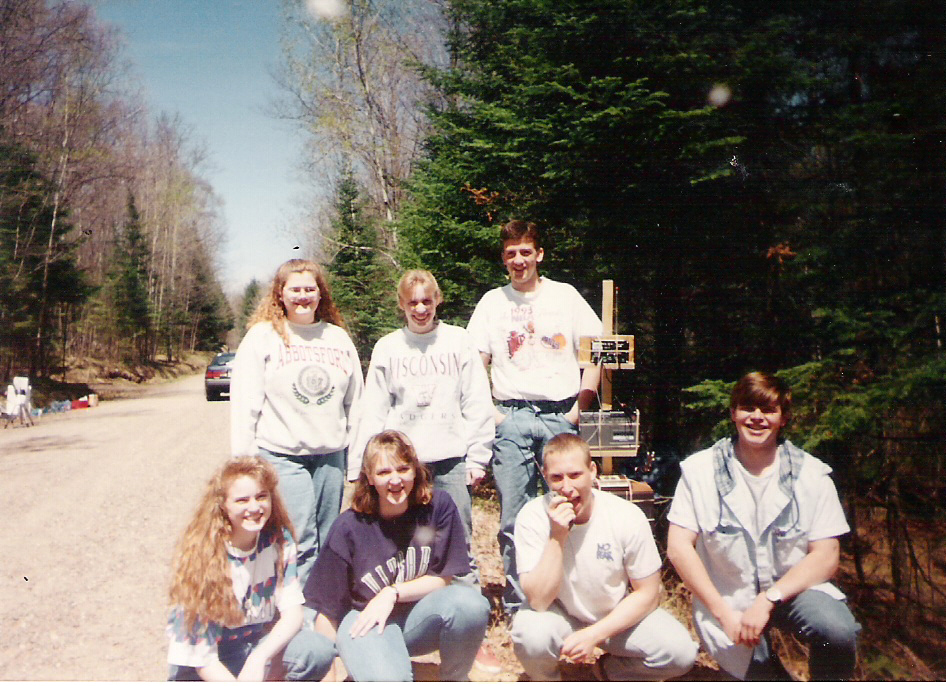
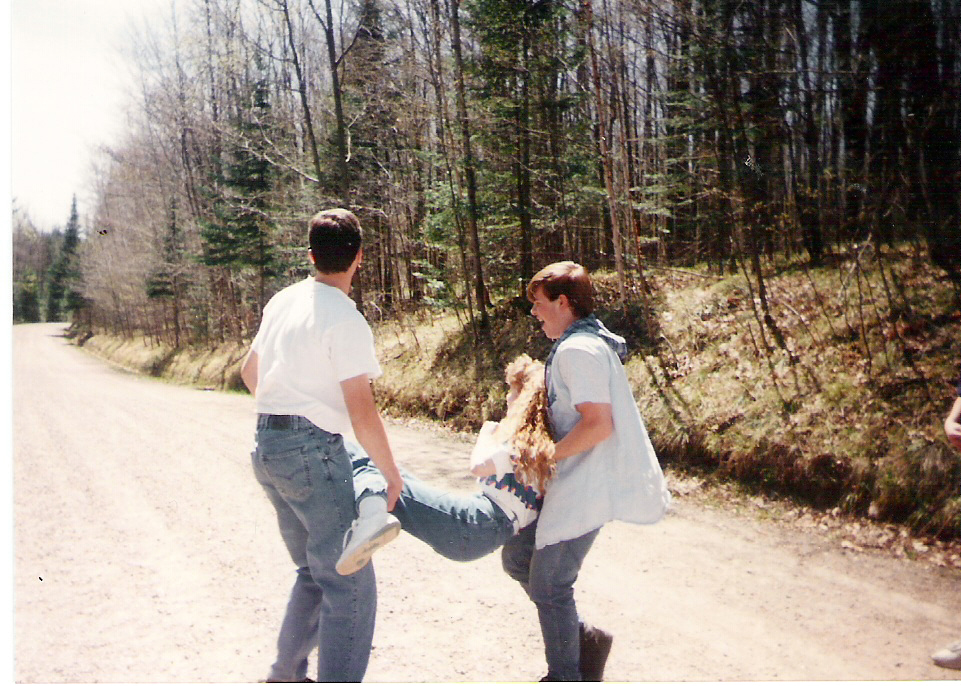
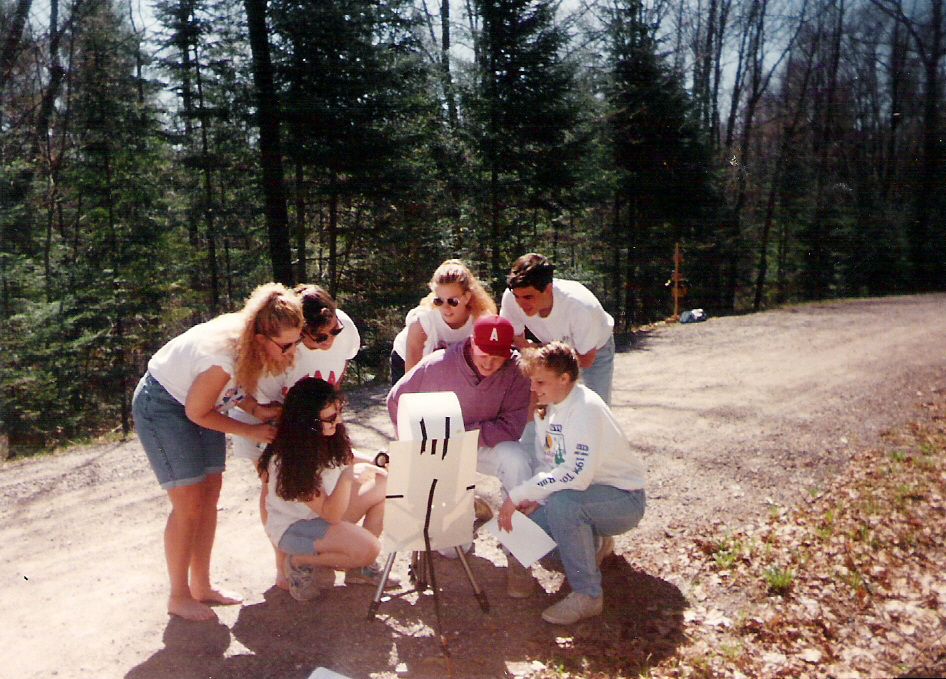
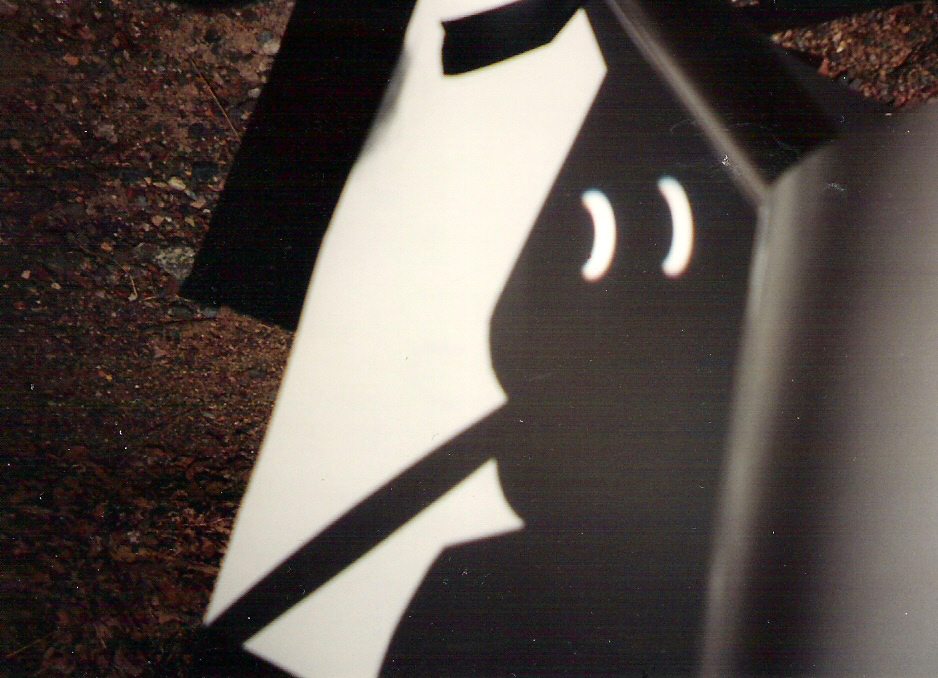
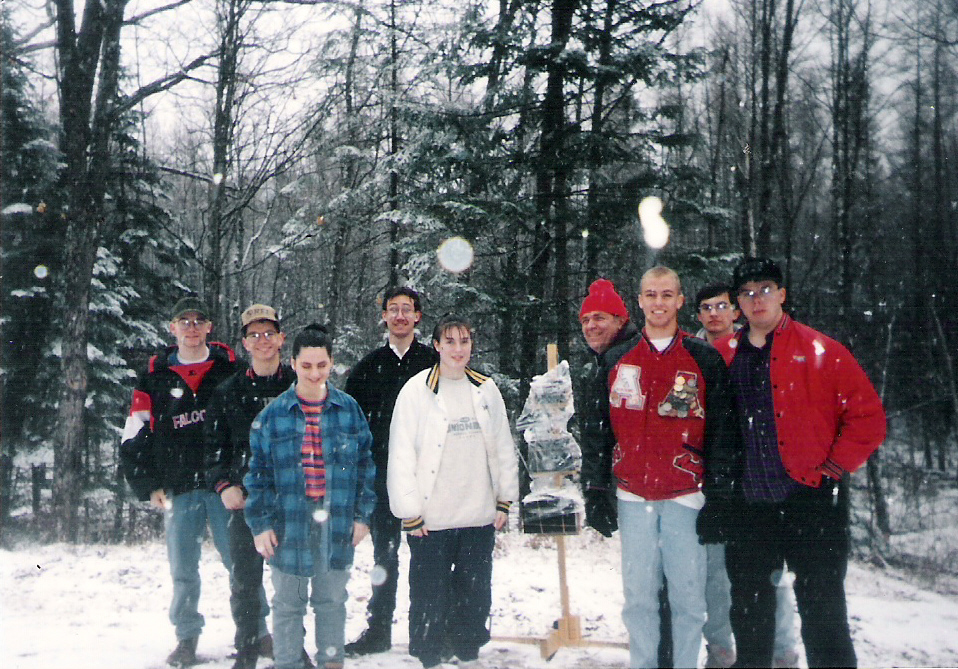
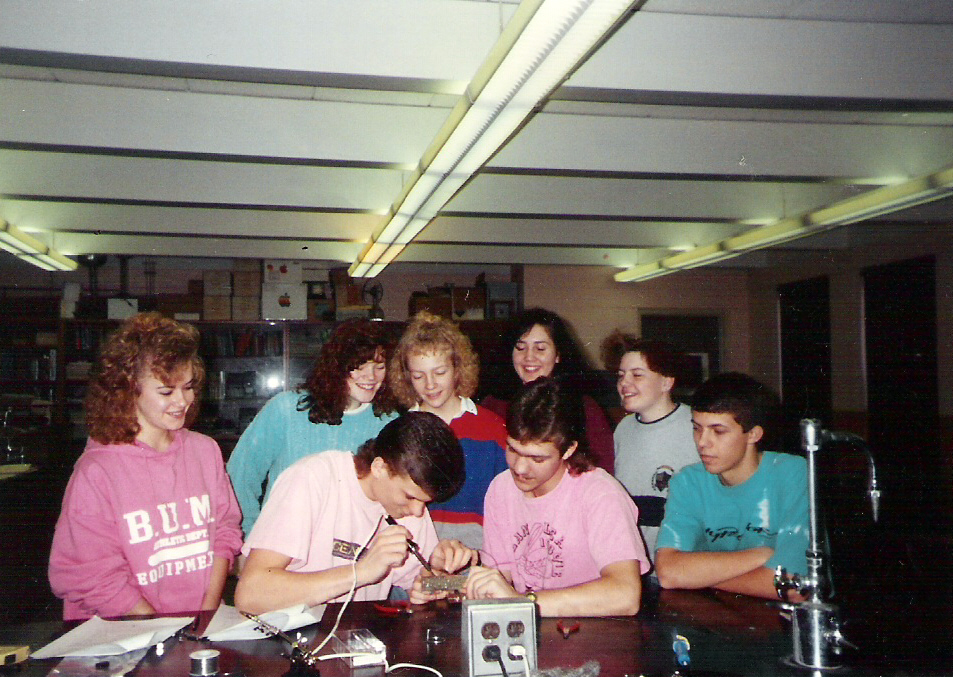
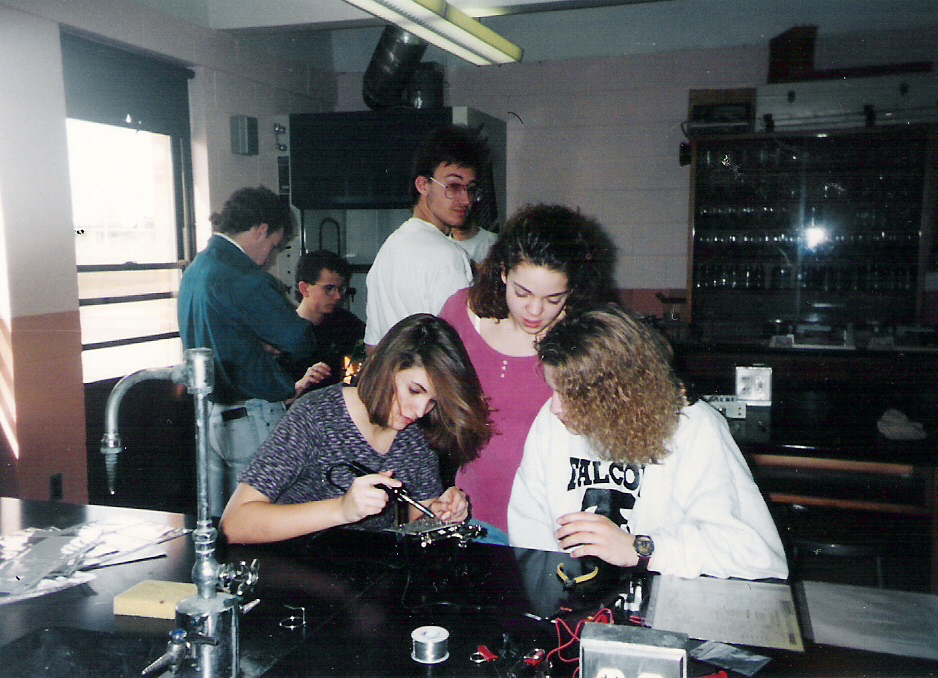
 Return
To Muzikman's Home Page
Return
To Muzikman's Home Page